Never Wholly Clean: Perfumery at Marlou
An examination of four animalic scents from the niche French perfumery
This is the second in the House Overview series, which explores individual perfume houses in depth.
If there's one thing you should know about perfume freaks, it's that we tend to like the stinkers.
In this we are lucky, as there are many notes in perfumery that exist to evoke the scent of hot sweat, dirty hair, and unwashed bodies: we call them animalics. Cumin and civet and castoreum, hyrax and styrax and oud; perfume fanatics call upon these stinky substances like the witches from Macbeth and beckon them to enter our lives. I like to believe that this is because fragrance fans are trying to analyse what they are smelling at all times so that we can strive to find the beauty in what can be confronting or banal, but there is a reputation around animalic scents that is more likely the reason for their popularity: people think they smell like sex.
Where does this inclination - from brands and consumers alike - to automatically link an animalic scent to sex come from? Well, it comes from the fact that sex is one of the only times that it is socially acceptable for the human body to have an odour. The reason that this is true is a deeper question, a more difficult question, that places the realities of the human body into the forefront of modern politics. It is at this nexus that the perfume brand Marlou has placed itself.
Marlou is a niche perfume house founded in 2016. It only has four perfumes, all of which center on what the brand calls “perfumery which intertwines with the body’s presence, embraces its flaws and creates it a new olfactory personality … This implies the acceptance and even ownership of faults, of imperfections inherent to that living object which is never wholly clean.” ¹
For a perfume house, this is a bold ambition. The overall trend of perfumery has generally been away from animalics, both due to taste and because natural animalic notes are almost entirely extinct from the perfumer’s palette. Is it possible to create a true animalic perfume using no animal ingredients? Can you create a scent that smells of the flesh without evoking sex - and would you even want to, when sex sells?
And most important of all: are Marlou’s perfumes any good?
PART I: THE ANIMAL
“Far from the commodified market, we propose hand-crafted creations produced in selective quantities, free of artifice, and fully devoted to their essences. Marlou is an auteur of perfumery; independent, emancipated, a playful tone teasing apart the mold of its own heritage.” ²
Like the early life of Napoleon Bonaparte, the origins of Marlou are ambiguous and poorly documented because no one was really paying any attention. Marlou seems to have begun as a fashion house that debuted accompanying perfumes in 2017, but soon morphed into a niche brand selling perfume alone.
All roads lead back to a single visionary: the founder and creative director Briac Frocrain. Marlou’s early history seems to be of a creative finding the form in which to best express himself. It is undeniable that in perfume Frocrain has found the art form in which he speaks fluently.
Niche perfume is not an easy market to enter. Competition is fierce, cost of production is high, and if you don’t have a brand vision then you have nothing with which to lure consumers in. This is where we begin to see why this house has carved itself a home on the shelves of niche perfumeries across the world: it has a singular and glass-clear vision to sell the raunchiest, stinkiest, dirtiest perfumes imaginable. Marlou is clearly and proudly the house of funk. They specialise in one type of perfume alone; the scents of the human body.
Building a perfume house that solely sells animalics is bold both aesthetically and logistically. Your main consumer is going to be fragrance fanatics and in fragrance fan communities there is currently an atmosphere akin to walking through the Mines of Moria: it is agreed that all the heroes are dead, all the great stories told, and the only thing left for us are the perfumed ruins of what once was. This is due to many factors - the explosion in quantities of perfume, leading to less time spent on formula development; the rise of houses acting in bad faith and willing to churn out anything that even vaguely has an aroma in the hopes it will turn a profit; and the restriction or banning of natural perfume materials.
There is endless debate over whether restriction of naturals is justified in nearly every case except one, which is animalics. Though perfume materials derived from animals have been used by humanity for thousands of years, they have been almost completely replaced by synthetics in modern perfume. The exceptions are either ethically sourced with no harm to the animal such as hyraceum (ancient rodent fecal matter), or used in small quantities by the true fringe houses of perfumery in limited batches - the perfume equivalent of only buying vintage fur.
The challenge to the perfumer then becomes recreating the complexity of natural perfume materials using whatever’s left on the palette. Happily there are more of these than you’d think, from the synthetic civettone to ambrette seed oil to costus root. Animalic base notes are not uncommon in modern perfume, but an entirely animalic scent is a harder sell.
Nonetheless, perfumes designed to evoke the body are not untrodden ground. There are the notorious Secretions Magnifiques (Etat Libre D’orange, 2009) and Muscs Koublai Khan (Serge Lutens, 1998), which are spoken of with a kind of horrified fondness by perfume fans even decades after their release. Further into the mainstream is the phenomenal stinker known as Kouros (YSL, 1982) which can only be compared to a sweaty gym change room, and Original Musk (Kiehl’s, 2004), a funk so bracing that it always stuns me to remember it is sold at the Kiehl’s counter next to the serums and creme de corps. Further down the price ladder are the drugstore classics Musk for Men (Jovan, 1973) and Tabu (Dana, 1932), still cheap and cheerful and available at the somewhat deflated chemist’s counter near you.
Animalics are the most interesting notes in perfume psychologically because they are the smell of the human body: the smell of us. It’s the one scent family that people like more when it is synthetic, because if a musk note is too realistic people fear that it might seem like the scent of themselves and not an expensive perfume. Better to have that touch of unreality to a musk note lest someone think you smell like an animal. Every animalic perfume asks the same question - why are we afraid to smell like ourselves?
Marlou intends to answer it.
PART II: THE SCENTS
Perfumes, when put in order, can often tell the story of a brand, and they very much tell a story about the craft of their creators. Marlou as a house is no exception and so the scents below are ordered chronologically.
CARNICURE (2016)
There’s a 1960’s Van Morrison song called T.B. Sheets. It’s nearly ten minutes long and it’s about tuberculosis. This was pre Astral Weeks Morrison, and the music had a distinct bluesy sound. The song has an oppressive, heavy atmosphere as the singer describes sitting in a room with a woman dying of consumption, the imagery vivid and bleak: the singer feels suffocated by the sickbed, the sheets, the smell. He begs to open the window so that he can breathe, but there’s no escaping the dark room; no escaping the feeling of death.
When I first sprayed Carnicure there was a nagging feeling, a sort of olfactory deja vu, as I knew what it made me feel reminded me of something. And about an hour later I landed on T.B. Sheets - the heavy blues, the dark room, the dirty sheets. It was as if Carnicure had been made to hover in the corners of that dark little fairytale as the song descends into nightmare.

Carnicure first began life in 2016 under a different name, L’animal Sauvage - this is what we can call pre re-brand Marlou. This scent was featured in Luca Turin and Tania Sanchez’s collection of reviews Perfumes: The Guide (2018):
L’Animal Sauvage (Marlou) ★★ oriental musky
This is the sort of fragrance you’d expect to smell when you enter one of those little shops dotted around the US that have a neon hand in front of paisley curtains in the window and a sign above that says Psychic Readings. ⁴
On Marlou’s website, each scent has a description that reads like a fleshy little haiku, followed by a more traditional notes list.
The description for Carnicure reads thus:
GLIMPSE OF BYGONE TIMES - WAX FINISHED WOOD
FELINE PRESENCE, FUR AND POWDERED ACCENTS
AMBER HEART - NOTES OF FLEUR AND FLESH ⁵
And its notes list follows, somewhat more legibly:
ORANGE BLOSSOM - VIOLET - PATCHOULI - SANDALWOOD - LABDANUM - MUSK - CIVET ⁵
For Marlou’s first scent, Frocrain comes bounding of the gate with a heavy and serious musk. I had dabbed this sample with hunched shoulders and a half-turned head, expecting the stink to end all stinks, but the scent surprised me by first giving me something quite anisic. This turned my head back to the blotter, as I’m quite fond of an anise note in perfume, and I think it takes a level of bravery to use them.
The anise is accompanied by a powdery violet, which automatically threw me into Lolita Lempicka (Lolita Lempicka, 1997) territory. There is a vein of that perfume here as the anise and violet form an accord that feels dark-hued and handsome, but instead of Lempicka’s candy sugar note, Corpalium has a great whallop of musk.
Not all musks are built the same, and not all perfumers use them well. Musk the note I hear people complain about the most in terms of it giving them headaches - and in reverse, there seems to be a great many people who can’t smell a lot of synthetic musks. This is the part of the perfume that Marlou most desperately needs to succeed, considering that it is the selling point of the brand.
And to its credit, though this is not the most elegant or best rendered animalic musk I’ve ever smelled, Corpalium does deliver. This is not a nothing musk or a headache musk, though it may use the same materials, because it is specifically and pointedly made dirtier by a really lovely and simmering labdanum and patchouli. These notes take the perfume into more of a dirty amber territory - Turin’s hippie store motif - than a true down-the-line musk.
But I think Corpalium succeeds most because it was so instantly evocative to me of a sickbed, a dark room, fevered flesh - not because it smells of blood but because it smells of a body in decay. The civet here is adding to that vision as it always brings a slightly urinal scattiness to the air whenever it appears. Civet is often sharp and screeching and always makes me think of the most distressing part of Shalimar (Guerlain, 1925), the bit that smells like a 1920’s party gone horribly wrong, but in Corpalium it simmers more like an animal in slumber than one on the attack.
In fact, the whole perfume is set at a low simmer, humming away closely but persistently on the skin. Maybe the worst thing an animalic scent can be is a projector - though we may adore them, it does seem somewhat unfair to force these particular perfumes on your coworkers and loved ones - so rather than being a disappointment I think the close sillage of Corpalium shows an elegance and restraint on behalf of the creator. This is a scent that is meant to stick close to your skin, to almost become your skin.
The thing Corpalium smells like most to me is a canvas of unclean sheets: the residue of perfume and skin, the mix of the musks from the laundry detergent, the warmth of the person entangled in them. I like a perfume that knows it does not need to shout because you’re going to pay attention even when it whispers. Though Carnicure is this scent’s second form, as a first release it quietly but firmly puts Marlou on the niche map.
AMBILUX (2017)
Sometimes a house will have one scent that is leaps and bounds above the others in terms of sales and notoriety, a kind of primate city of perfume: I call these Nutcracker perfumes, as they do for their houses what the Nutcracker does for most ballet companies in supplying the funds required to keep the whole business afloat. There is no doubt that Ambilux is Marlou’s Nutcracker perfume.
Much like Carnicure, this scent began its life under a different name: d’Ambiguité. This garnered a less-than-favourable review in Perfumes: The Guide (2018):
d’Ambiguité (Marlou) ★ sweaty urinous
Wear this, grow a messy beard, sit on a park bench, talk loudly to yourself, answer back, and soon enough they’ll take you away, hose you down for free, and give you warm soup. ⁶
Ambilux’s description reads thus:
SUMMER SWEAT - DRIED WEEDS, DUNES
SENSE OF HEAT AND SUN - MATTE, WAXEN FINISH
DEER MUSK REIMAGINED - FACETS OF SALT AND CHALK
INTIMATE SCENTS ⁷
And its notes list follows:
CUMIN - HELICHRYSUM - YLANG-YLANG - INCENSE - COSTUS ⁷
When asked about the scent in an interview, Frocrain expanded on its success:
Ambilux is the most daring of our fragrances. It's the one that marked an important step in our brand image, moreover, among our customers, it's the one that people are most passionate about. Ambilux is also very personal, it's a work on summer sweating and dunes by the sea that refers directly to where I come from on the Atlantic coast in France. ⁸
Ambilux is first and foremost an immortelle perfume. This flower, named as helichrysum in the notes list and also known as everlasting flower, is one of those hardy and fragrant plants that grow on rocky Mediterranean coasts. It is a difficult and divisive note which has facets of curry spices, maple syrup, and a floralcy that is bitter and herbal. Its most famous use in perfumery is Sables (Annick Goutal, 1985), to which all immortelle perfumes will garner comparison.
Immortelle’s use here is clever as it is the perfect note to give the feeling of sweat and florals and the sea, as Forcrain intended. How it does this considering the parched dryness of its aroma is one of those little miracles of perfume.
None of Marlou’s scents could be called sweet, and their lack of sugar is refreshing in the current market, but with immortelle’s evocation of maple syrup we get a touch of something sugared, almost in the way a drop of molasses would smell if you spilled it on your finger. But playing a much larger role in Ambilux is immortelle’s dryness and its smell of dried sweat.
One of the most divisive notes in perfumery is also in Ambilux to give a feeling of sweat, and that is cumin. Like nutmeg and cinnamon, the chef’s cumin has little in common with the perfumer’s. In a perfume cumin can add to a harmony of spice to give a feeling of dryness and heat, like an arid savannah on a sunny day, or it can smell like your armpit after you spend that sunny day inside at the gym.
Cumin upsets people. In the bizarre world of perfume, this makes it helpful as an ingredient because when things smell a little bit unpleasant, it tricks our brain into think it is a natural ingredient because… well, who would ever waste money in trying to make something that smells like leftovers and gym sweat?
In what is perhaps a missed opportunity, the cumin in Ambilux stays relatively tame: it is not, unfortunately, giving armpit. But it does add to the fleshiness and also the dryness of the rest of the perfume, so it plays its part in the wider harmony.
The real funk of the scent, which the cumin and the immortelle both reinforce, is the costus. This high altitude plant and its synthetic counterparts are one of the best weapons in the war to make un-animalic animalics, because it smells mostly like unwashed hair.
This sounds, on the surface, as if it is horrendous, but in Ambilux there is a strange sort of comfort to this scent of warm scalp, one that is so familiar to us but that we rarely ever think about. This scent is like reigniting the part of your olfactory system that simply edits out the scents of the body when nothing urgent is happening, like finding a freckle you’ve always had and simply never seen before: were you always there and I just never noticed? If your hair is long enough, take a piece and smell it - right now, right underneath your nose. That’s you - the you that’s in Ambilux.
Once Ambilux has roared itself quiet, the drydown ends our story with a truly beautiful incense. A wonderful and underused facet of frankincense is how in its raw form it can smell as cedary as freshly shaved timber, like it takes something of the essence of the tree into its resin as it forms. Most incense notes are refined to remove this but Ambilux embraces it fully, a genius way of adding dimension and an almost-woody base to this perfume whilst keeping that theme of dryness. This is a perfume that wants to give density, not airiness, and the rough incense adds to the weight of the thing - it’s a note that almost feels heavy in your hand.
The overall feel of Ambilux is of a sort of heady fattiness - it seems wrong somehow that it does not leave a smear of wax on your wrist. It smells of a home - not your home, maybe, but a home, a place where people can spend their quiet moments, where they let down pretenses and let their hair get a little dirty or leave the sheets a few days too long.
Ambilux does not romanticise this feeling so much as shine a light on it and say that there is beauty, maybe most of all, in the common and everyday beats of life. When you get to this conclusion in the long drydown, it is easy to understand why the Nutcracker sells.
POUDREXTASE (2019)
In my bedroom, I have books and shoes and ribbons for my hair. I have a canopy over my bed like a princess in a fairytale (except I bought mine from Amazon), and I have an embroided jewellery box in which I keep perfume samples and earrings and lip balm. I have a big velvet chair where I get ready in the morning, and it’s pink; I have a bedspread and it’s pink too. My room is pearl pink like the paws of a kitten, like strawberry gelato. If my room was a perfume, it would be Poudrextase.
Every perfume lover has certain notes or accords that they grow to have a soft spot for, and one of mine is rice powder. This powdery, fluffy, chalky note is so automatically evocative of vintage makeup and the boudoir that it leaps out of any scent it’s featured in to spread its feather boa all over your wrist. Upon reading that Marlou’s third scent, Poudrextase, features a rice powder note I knew it would be my favourite of the set, and so it is.
Poudrextase’s head-scratcher of a description reads:
SKIN, CLEAN TO DIRTY
LOTION-LIKE NOTES - CREAMY, VANILLA FINISH
MILKY FACETS - SOFT RESIN
INTIMATE SCENTS, SCALP AND NEWBORN SKIN ⁹
And its notes list follows:
RICE POWDER - ROSE - CYPRESS - TONKA BEANS - CIVET ⁹
Using powder notes to create a ‘dirty skin’ accord is a method as old as perfumery itself. Some of my favourite scents that use this trick are Putain des Palaces (Etat Libre d’Orange, 2006) and Blanc Poudre (Heeley, 2018), both musk-and-powder bombs that purposefully aim for the boudoir and stick the landing. Powdery notes can include iris, violet, opoponax, rose, and any elements of the traditional amber accord, so we can see immediately from the notes list of Poudrextase that it is going to be true to its name and contain an explosion of powder.
There’s something that feels vintage about a powder note even when it’s in a thoroughly modern perfume. Powder notes can feel suffocating, almost claustrophic, as if they are taking up all the air in the room. They can also feel warm and comforting, as if they capture the essence of your mother’s vanity only as you saw it as a child, when the trappings of adulthood still held some glamour and mystery.
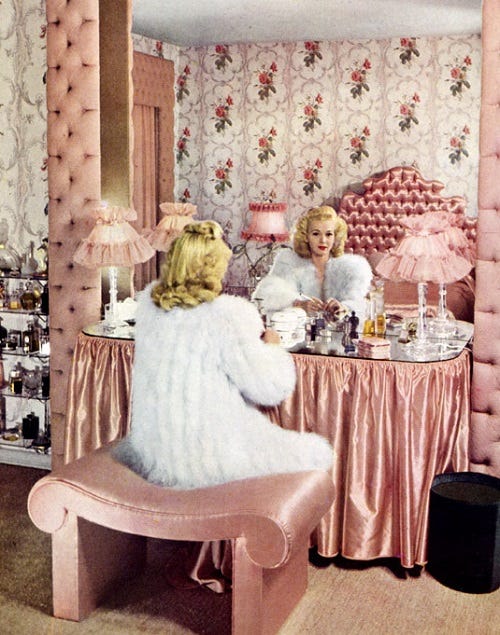
All this and more comes to the surface with Poudrextase upon first dab. Immediately most prevalent to my nose is the dried rose accord, because it does smell of dried rose exactly. When you’ve smelled enough perfumes you begin to think you could construct a rose by nose alone, all its facets completely rendered: the greenness, the sweet floralcy, the spicy clove-like eugenol. But here is a rose that is papery and dry, like pot pourri, like petals pressed between book pages and hidden underneath the bed.
This is a rose that feels like it would be faded in colour, almost faded in memory, the sort of thing they sell in jars in quaint and charming apothecary stores. I like this rose. It adds to the powdered thesis of Poudrextase but brings its own character too. Straight away, I’m impressed: this is clever perfumery.
As the scent blooms on my skin, one feeling predominates. Though I don’t have synaesthesia, I do often think that some perfumes smell like colours. The idea is not uncommon: the fragrance industry sometimes tries to create this correlation, as with the infamous barrage of bleu scents currently on the shelf. Iris and violet scents feel like a purple to me, and vetiver smells of a khaki green-brown, but Poudrextase smells of one thing and one thing only: pink, pink, pink.
A powdery pink scent, with its vintage feel, thus immediately takes us to the 1950. Pepto-Bismol and the New Look and that specific almost pearlescent pastel pink that so dominates our concept of this time are all swimming in this rice powder and rose accord. The pink on the cover of Flamingo Serenade, that you can hear woven through the dreamy and slightly unsettling I Only Have Eyes For You - that’s Poudrextase.
There is a sweet facet to this pink powder but it is restrained, like the powder that covers the outside of a marshmallow. It’s not skirting anywhere close to vanilla - small mercies - but I do smell a touch of the creamy sweetness of coumarin, which always gives a perfume an air of sophistication. This perfume is too grown up to be a gourmand but may appeal to the gourmand lover with its creamy, almost lactic drydown.
Poudrextase follows all this pink with a civettone note that practically purrs. The civet cat, historically one of the victims at the altar of perfume, was harvested for its fecal matter, which is dense and complex material that seems to latch on to the similarly fecal notes present in many flowers and cast them in a deep and radiant glow. Civettone brings both its urinal quality and also this dense radiance, like the buttery golden glow of candlelight, to Poudrextase. Of all of Marlou’s animalics, I am most impressed by its use of civet. This is a note I will often consider a detriment to a perfume, but its use here is not only justified by necessary.
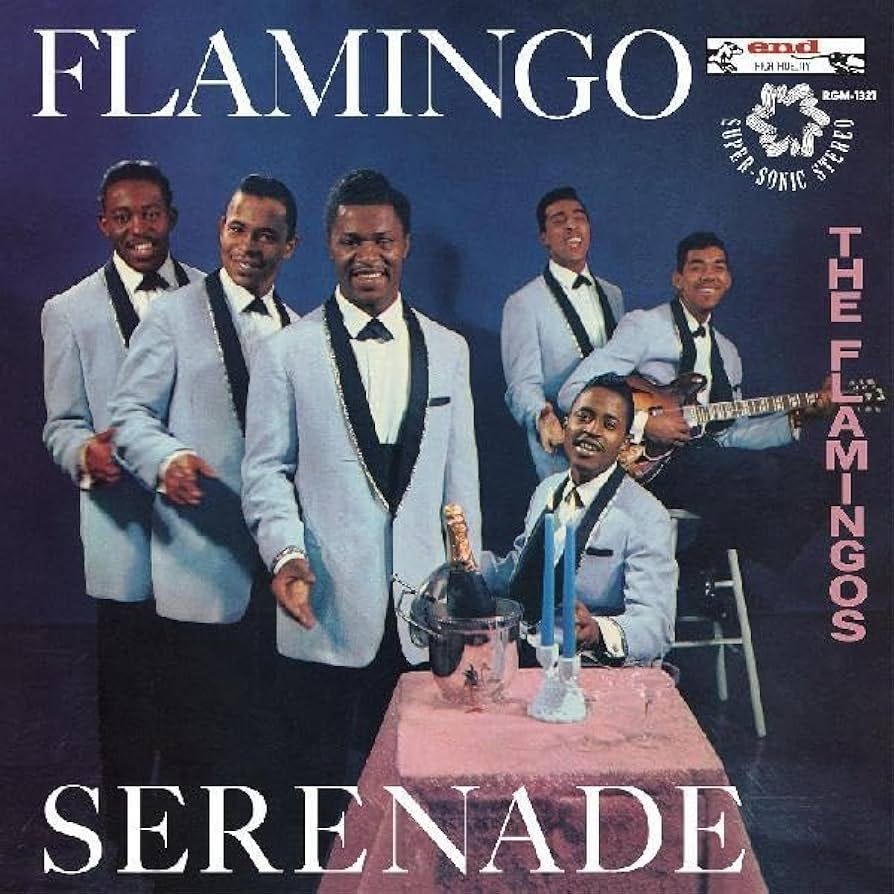
Though Poudrextase stays close to the skin like all Marlou scents, it is nonetheless a room filler due to that overwhelming feeling that the powder gives you. The blotter I sprayed this on diffused my bedroom with a softly powdered fragrance for at least a week; I kept on meaning to throw it out but didn’t want to lose that delighted feeling I got when I walked into my room and thought, what is that lovely smell?
Poudrextase is a perfume that is so purposefully pretty, almost dainty, that it seems like it’s trying to be ironic. When a scent is performing such an overt femininity there always feels like there is a penny waiting to drop, an expectation that all this fluff will be contrasted with something - if it is not, it feels like a sentence only half written. And as this perfume floats into its drydown like powder dissolving into the air I come to the conclusion that it is, indeed, in earnest. It is a pretty and powdery perfume to make you think of the vanity, and of makeup, to think pink, and to think about these things as what they are: things you wear rather than things you are, things you use to project an image into the world using your body as a canvas.
Poudrextase is in conversation with femininity as performance, makeup as ritual and makeup as social obligation, all those sticky thorny topics that live in the time between sitting down at the mirror and the last spritz of setting spray. Making any choice about how you look is political; making no choice is political; is it reality that to be in a body is to be judged?
Sometimes in this perfume, as in life, the thought of all this overwhelms me. It swirls around, pressing, suffocating, like so much powder, like pink satin and pink thread stitching me into a prison of my own skin. There’s so much dust in the air. The powder moves in front of me like whorls of smoke.
Then I catch my own eye in the mirror, as if she and I are sharing a morbid kind of joke. And then I get up and live my day.
And when I get home and walk into my pink room the trail of Poudrextase is there to welcome me, soft dried rose and a veil of powder puffing away all my worries like they were nothing more than yesterday’s blush.
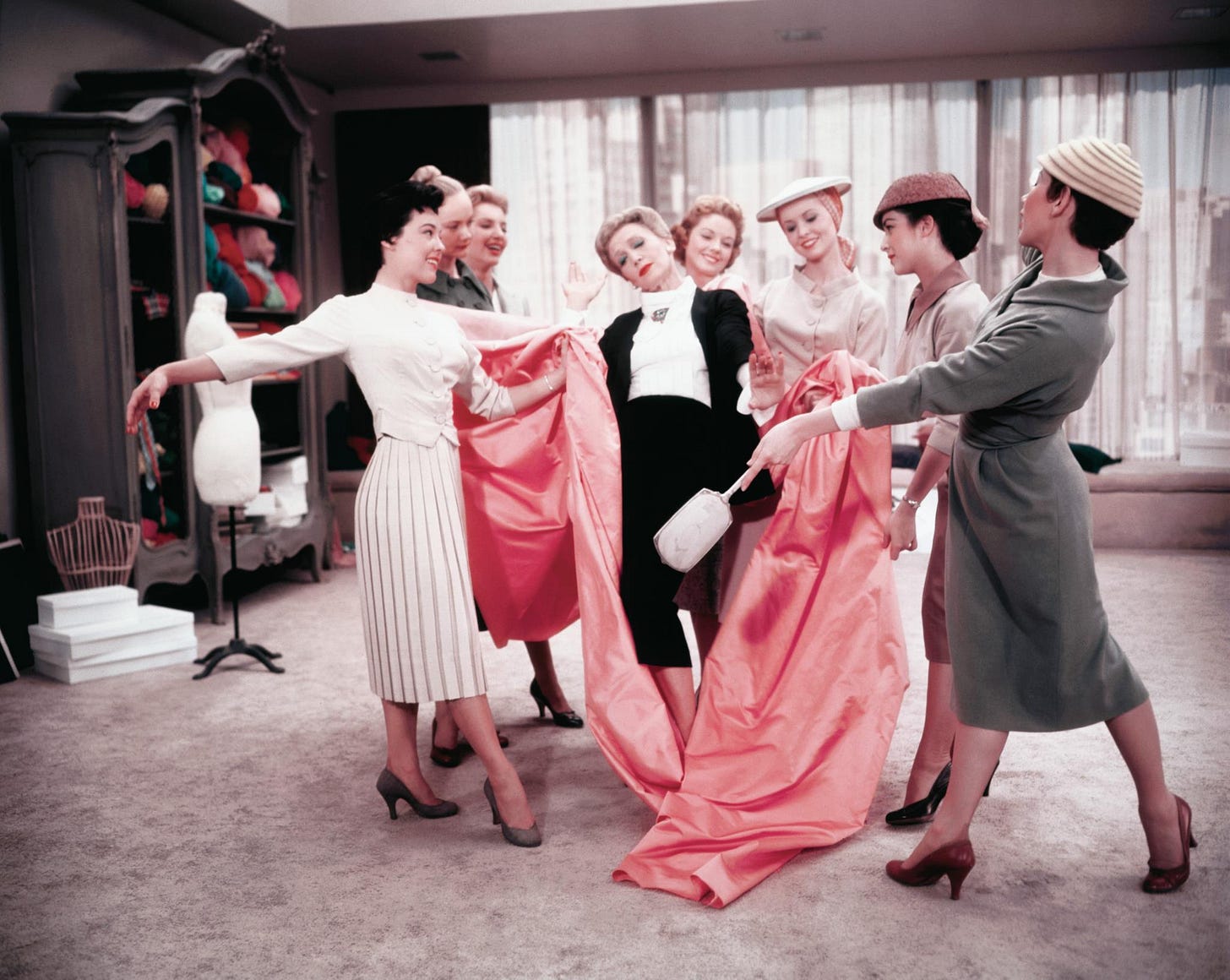
CORPALIUM (2022)
Marlou’s latest scent, Corpalium, is by far its most animalic. Frocrain notes the scent is “a work on the iris and its earthy facets carried on a more leathery and equestrian animality.”₁ₒ For the first time we have a Marlou scent that is inspired by the scent of a specific animal. It is in good company: horse and equestrian inspired perfumes are in thick supply, from Habit Rouge (Guerlain, 1965) to Corpus Equus (Naomi Goodsir, 2021). With the genre already in such rich supply, I sniffed the blotter not expecting anything novel to be added to the great canon. Happily, I was completely wrong.
Corpalium’s description reinforces this equine theme:
EARTHY IRIS ROOT - LEATHERY FINISH
FACETS OF TOBACCO, A SHADE OF ACIDITY
DRY WOODS – COOLNESS OF TERPENES
EQUINE SENSUALITY - STRAW AND DRIED LEAVES ¹¹
As does its notes list:
IRIS - AMBRETTE - FENUGREEK - GAIAC - CEDAR - CASTOREUM ¹¹
When I smell Corpalium, what I think of is the Scythians.
There have been countless nomadic pastoral cultures in the history of humankind, but there’s something about the Scythians that captures the imagination of the romantic. This civilisation lived on the Pontic steppe in the era just before modernity, and much of what we know of them come from their own burial sites (known as kurgans) and from the writings of Greek authors who saw them as half-mythic horsemen.
Herodotus wrote of the Scythians: “The Scythian race has made the cleverest discovery that we know in what is the most important of all human affairs … they have contrived that no one who attacks them can escape, and no one can catch them if they do not want to be found. For when men have no established cities or forts, but are all nomads and mounted archers, not living by tilling the soil but by raising cattle and carrying their dwellings on wagons, how can they not be invincible and unapproachable?” ¹²
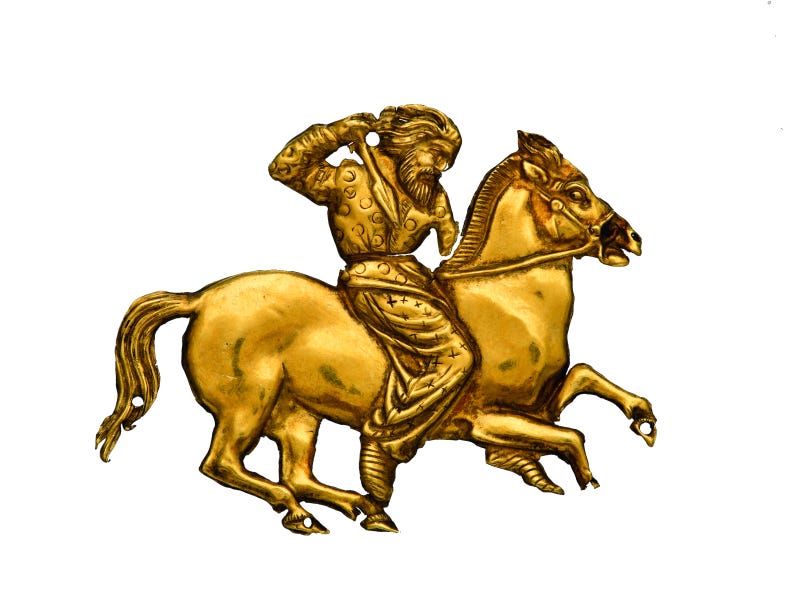
Much of what we know of the Scythians is mythologised nonsense, but what we do know is how deeply their lives were intertwined with their horses. For the Scythians a horse was a companion and a weapon, a symbol of power and prosperity, the force of life itself. They made war helmets for their horses as ornate as for humans, and Scythian lords had their horses buried with them when they died.
Corpalium is so deeply horsey from its beginning that I almost looked around to see if the animal was in the room with me. The castoreum in this perfume has no intention of waiting for the drydown and smacks you like a horse’s tail whipping across your cheeks so that you can do nothing but brace for it to soften, which it does… after a day or two. This opening gambit also gives us touches of a powdery iris - also saddle worn - and a tobacco that is more leaf than cigarette, and a chewed leaf at that.
This saddle and bridle style of perfume is not new territory for niche houses. Many perfumes have used iris and tobacco to summon up the image of the Malboro man, the stoic cowboy who may not be verbose but nonetheless hides the heart of a deep romantic. The Corpalium man would not hesitate to kill the Malboro man in a pistols at dawn duel and then ride over his body. There is no room for sentiment in the wall to wall breathless fecal funk of this perfume, no mercy and no quarter: instead there is enough ferocity to make you tremble.
For someone who has no olfactive reference points to anything equestrian, the smell of Corpalium summons up the image of a person who not only rides horses but is a horserider; someone who lives almost symbiotically alongside their animals. The funk of the fenugreek and the superb, if bracing, castoreum create a worn leather accord that hearkens back to the Cuir de Russie style of perfume that was popular in the 20th century (and is still sought after by vintage fanatics in the 21st).
It is believed that the Scythians invented the leather saddle. They were only one in a long line of continuous steppe cultures whose society relied on a relationship to horses to survive - it was on the Pontic steppe where the horse was first domesticated thousands of years ago. Scythians and Cimmerians, Mongols and Pechenegs, Cossacks and Tatars and Huns: all of them horseriders on the same great grasslands; all of them living in this little amber and cork bottle of Corpalium.
Grass is present in Corpalium through its iris note, rendered almost unrecognisable in the growling symphony of this perfume. Gone are any lipstick or floral facets that this note can sometimes bring: this iris is all powder and dirt.
Leather saddle, chewed tobacco, dirt and horseflesh: that’s Corpalium.
Perhaps what reinforces this image of the ancient horserider in my mind is Corpalium’s utter relentlessness. It has no beginning, middle, or drydown; it has no pretty and ephemeral top notes to beckon you in. Upon first application this scent is a huge, growling animalic, the fenugreek and castoreum giving a frightful sense of wrongness as if something’s spoiled in the juice; the iris placating you by saying no no, we mean to smell this way.
Corpalium smells thick - if it were visible it would be sticky like sap or tar, oil-black and ominous. It smells lived in, the way traditional perfumes do about eight hours in to the drydown when all that’s usually left are the amberwoods or the musk. And there is something fecal lurking behind all of that, which always feels so transgressive to smell and even bolder to wear.
As we follow Marlou’s history, this perfume’s hyper specific brief that attempts - and succeeds - at embodying all things equestrian shows an evolution in Frocrain’s skill. A perfume brand needs a clearly understandable hook and it’s always better when an individual perfume has one as well - it makes it easier for audiences to understand the the perfume and connect to it. Something is moving in the right direction for Frocrain - Corpalium received a notable mention at the Art and Olfaction awards, which are famously smelled ‘blind’ with judges not knowing notes or creator. I wonder if they took one whiff of this prowling menace of a perfume and got the crack of the horsewhip too.
There’s a feeling in Corpalium not of horror but of terror, of something just over the horizon, that feeling the sedentary civilisations felt when they thought of the great nomads who would, every so often, ride out of the steppe and come down upon them like the fury of God.
Usually when I think of civilisations that have faded into history there is a kind of sadness attached, a feeling that though the fate of all worlds is to fade there is still something lost when they do. Corpalium averts this entirely by being so hyper-vivid and realistic that it makes you feel as if you are this horseman, as if you are there on the steppe with the horse and saddle, as if smelling this tricks your mind so cleverly that for a moment you forget the wide lens of history and can only focus on a single solitary heartbeat.
I know many people who tell me that when they spray a perfume they picture a person, and if this person matches who they are or who they want to be, they'll buy the scent. In this way perfume is much more about performativity than identity: we wear the perfume that projects who we want to be in the hopes that wearing it makes it seem like that is who we are. The great and vanished Scythian is, as Herodotus says, invincible and unapproachable. But in Corpalium I feel a sense of connection to him - and I see the power of feeling close to someone even if they only exist as an idea in your mind.
Maybe a man lived once who spent his days smelling like this. And what a miracle to think that you can, if only through olfaction, if only for a moment, forge a sliver thread of connection to the great arc of humanity that has always lived in a body just like yours across the great chasm of time.
PART III: THE BODY
After smelling Marlou’s four remarkable perfumes, the biggest question I had was what perfumer created these?
Fragrantica lists Frocrain himself as the perfumer on all four perfume. But as the house is niche I am inclined to think that Frocrain acts as more of a creative director, bringing briefs or even materials to perfumers or oil houses to create the actual scents. In an interview Frocrain indicates this is his creative process:
To put a perfume on the market, I always call upon perfumers and laboratories who have the necessary knowledge of chemistry, the materials that can be used or not, who know how to work the juice so that it is stable and qualitative. We maintain a creative dialogue which largely completes my personal mixtures which would not be completely marketable. ¹³
Though it is always frustrating to not know what perfumer has created a scent, this cloak of mystery is the standard of the industry. What is undeniable is that Marlou’s scents have a consistency and clarity of vision that must come from Frocrain as the creative behind the brand. The art of perfume curation, in working with perfumers to refine scents into the best possible form they can take, is a vastly underrated skill. This is what catapults perfume collections like the Christopher Chong era of Amouage, the Tom Ford era of Gucci, and the early years of Serge Lutens into legend.
The thing I like best about Marlou might be that they have set the parameters of the brand and have set forth to interpret that in as many interesting and innovative ways as possible. You can smell this in every one of their perfumes, and that is a rarity and a delight.
“I wish that the presence of the body comes back a little more in our olfactory communication. It is possible to do it with subtlety.” - Briac Frocrain ¹⁴
Marlou’s perfumes are bold, divisive, avant-garde and practically purring underneath their cork stoppers. But is the animalism all just to generate buzz? What do these perfumes add to the great art canon of perfume, and are they actually wearable?
Wearable, I suppose, is a misnomer when we talk about perfume: you can put anything on skin and wear it. Endurable is the more accurate phrase, and there are plenty of perfumes I can think of that would be unendurable to wear for any length of time. To my shock none of the Marlou scents, even the yowling Corpalium, came into this category for me: I very much enjoyed the time I spent with them. I’ve deduced that this is partly because Marlou perfumes are self aware enough to know that because they are strong they don’t have to be loud. These perfumes sit close to the skin with a barely-there projection so that they feel very personal as you wear them - perfume just for you.
This in itself is radical when the reason many people wear perfume is for it to project and get them noticed. This lack of projection is what makes Marlou feel artisan, a simple creative choice that automatically sets the brand against the majority of niche perfume.
There is an argument to be made that if you want to smell of the body, simply don’t wash, and that is somewhat true. But these perfumes still smell luxurious - they are all priced at $220 AUD for 50ml and they smell of a quality that would justify that price. The contrast between the intention of creating a ‘dirty’ smelling perfume and doing it with high quality ingredients are part of what makes Marlou so appealing.
The word that comes to my mind over and over as I ponder Marlou’s perfumes is in the word salad of Ambilux’s description, and that is intimate. These perfumes smell, more than anything else, of intimacy - not of sex, which is the easy and unthinking association many give to animalic scents. But as you can be intimate with a person without sleeping with them, so Marlou can smell of intimacy and not of sex. This is the smell of a person that clings to their clothes after they have worn them all day; the smell their hair leaves on the pillow. It can be uncomfortable in the modern world to think of the body having any natural scent at all, and Marlou not only confronts this openly but goes further to say that there can be great profoundness, and even beauty, in celebrating the way we smell.
“Choosing a perfume that dialogues with your body odour is very intimate. Wearing it is a way of communicating this intimacy to others in ways other than words.” - Frocrain ₁₅
Intentionality is one of the great powers that perfume gives us. The ability to choose how we smell and define our olfactory space is the reason humanity has been drawn to perfume for thousands of years. It is not radical to want to smell pleasant —everybody wants to smell pleasant. But it feels like there is something radical, something subversive, in taking the intimate scents of the body which are so politicised and stigmatised and saying this is what I want to smell like.
If the act of wearing perfume is always performative, to wear a Marlou perfume is to elevate the scent of the skin to be not only desirable but aspirational: to smell not of clean skin or the trail of laundry musks from your clothes but of skin, of the sweat that catches in your scalp and the warmth at the backs of your knees. Marlou perfumes are the smell of getting ready in the morning and the steam of the shower as it beads on your arms; the smell those moments of privacy with yourself before you put on your deoderant and your shirt and your jewellery and your shoes; the scent of when you come home after a long summer’s day, a little wilted and sticky from sweat that started to bead and dried soon after; the smell of hot hair and skin when you lean into the nape of the neck of someone you love.
These perfumes are the scent of living, in all those ways we try to avoid in modern society. Humanity has not yet found a way to transcend flesh, and the rice powder of Poudrextase and the costus root of Ambilux put forth a convincing thesis that something intangible will be lost if we ever do.
What a miracle, after all, the body is - how it grows. How it changes. The body is the most sophisticated piece of evolution on earth, and it belongs to you. And while it’s true that your sense of smell grew through that evolution to be a warning system, and when your body begins to smell it’s that system sending off an alarm, at the same it’s telling you the most important thing of all. Through Marlou perfumes the body speaks, and it is saying:
I’m alive,
I’m alive,
I’m alive. ◙
A Note on Sampling
It is impossible to overstate the value of an affordable sample service to perfumery as an art form. As someone who lives hours from the nearest big city, and even further from the only city on my continent that really has the stores that sell deep niche and artisan perfume, I dream of having a Jovoy or ScentBar within travelling distance. For small brands sample packs are high cost and low reward, so I always appreciate when they are affordable and accessible.
Accessibility and sustainability are a part of the brand ethos at Marlou. Their website states:
Glass, cork, aluminium, uncoated paper, and as little plastic as possible: this is Marlou’s simple formula. We favor that modest beauty which adds value to our perfume but not cost. Destined for disposal, all our materials biodegrade or can be recycled. Amber glass protects what it contains, avoiding the need for additives in the liquid. ³
True to form, Marlou’s sample bottles are a screw top situation in pleasantly miniature amber bottles. The problem with dabber samples is that they get everywhere; instead of a diffused spray of perfume on your wrist or elbow you get a concentrated, unsprayed teardrop of perfume that will roll from wherever you put it; it gets on your fingers; it gets on the back of your hand; if you don’t wash your hands immediately after applying it will get in your hair and on your cheeks and, if you are very unlucky, onto your food.
With regular perfumes this is troublesome; with Marlou perfumes, it is diabolical. By the time I got to road testing the third scent, I wondered if this was by design: instead of being able to spray a small amount of Ambilux or Corpalium on, say, your knees (a great way to test sillage) you are forced to be overwhelmed by these perfumes. Even putting them on the blotter will get some on your fingers, so you are forced to contend with the skin scents on skin. Madness or genius? Either way, bothersome.
Though we’re all celebratory of a brand who aims to use as little plastic as possible, the Marlou sampler bottles are messy. They are going to become the main character of your entire day whether you like or not. Perhaps this is why they come with a charming little warning label. User, beware.
REFERENCES AND SOURCES
All prices are current to the Australian dollar as at February 04, 2024.
Almost all the quotes from Mr. Frocrain in this article are from a single interview with a Turkish magazine that was translated into English on a perfume forum (source 8). I couldn’t find the original of this interview, to my frustration: please take into consideration the provenance of this source.
¹, ³ https://www.marlou.fr/?lang=en
² https://www.fragrantica.com/news/Minimalistic-Animalic-L-Animal-Sauvage-by-Marlou-8979.html
⁴ Page 97, “Perfumes The Guide 2018.” Turin, Luca; Sanchez, Tania (2018)
⁵ https://www.marlou.fr/product-page/carnicure?lang=en
⁶ Page 64, “Perfumes The Guide 2018.” Turin, Luca; Sanchez, Tania (2018)
⁷ https://www.marlou.fr/product-page/ambilux?lang=en
⁸, ₁ₒ, ¹³, ¹⁴, ₁₅ http://www.meseyosunu.com/index.php?threads/briac-frocrain-marlou-parfum.990/
⁹ https://www.marlou.fr/product-page/poudrextase?lang=en
¹¹ https://www.marlou.fr/product-page/corpalium?lang=en
¹² Chapter 4, Page 46, “The Histories.” Herodotus; translation by A. D. Godley (1920)
If you are interested in more of my writing on perfume, here is my deep dive on niche house Le Labo and here is my long read on Baccarat Rouge 540. I write other articles such as this one on this Substack, and can be found talking about perfume on twitter and Instagram.
If you read this far, thank you.


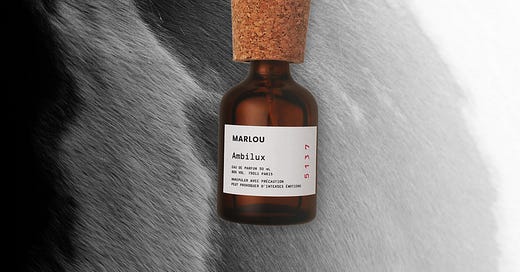



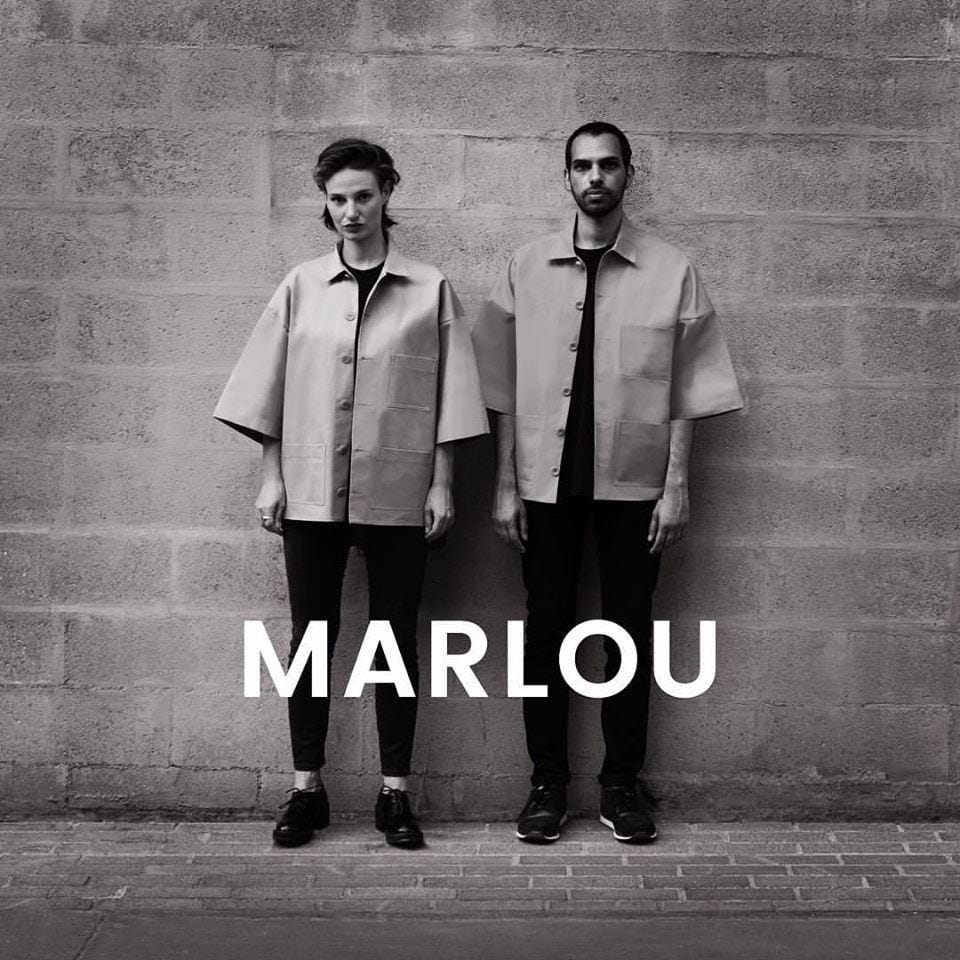




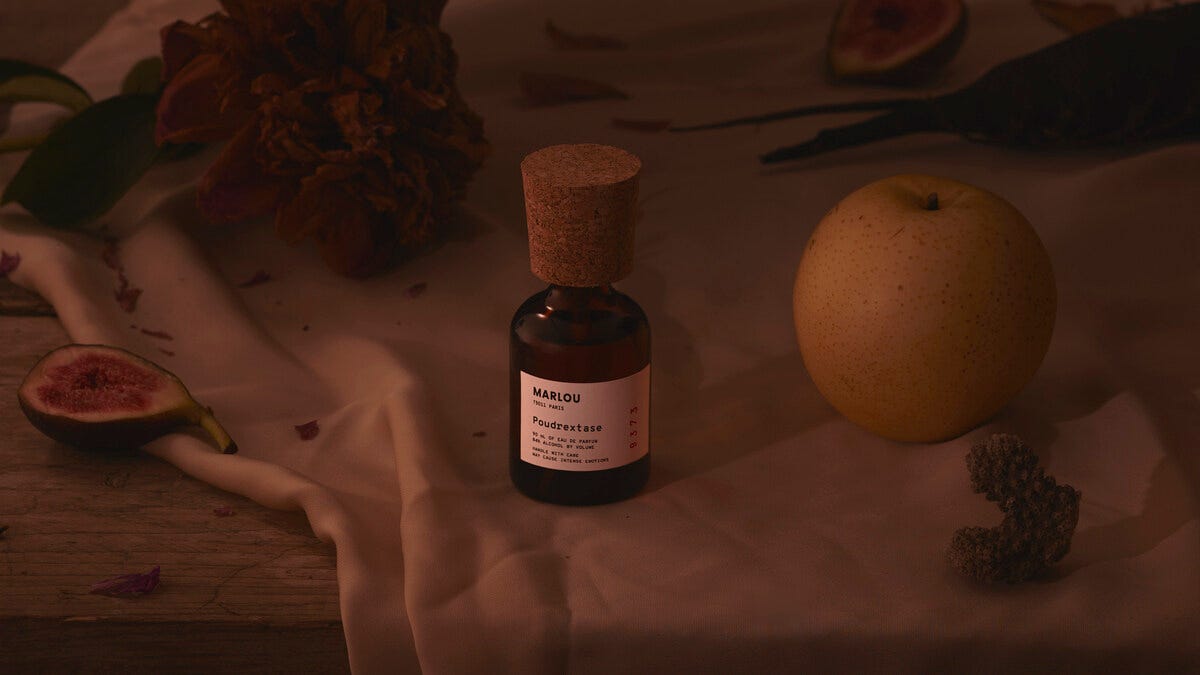
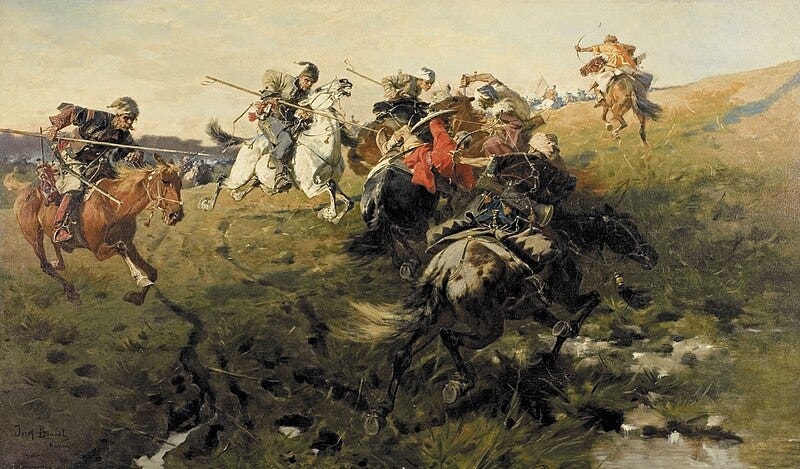



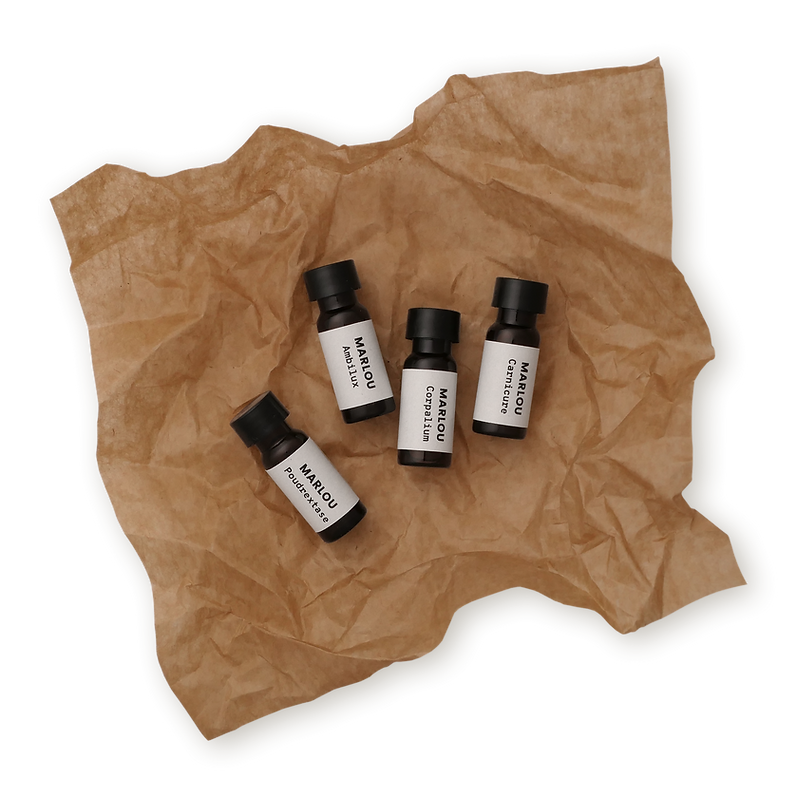
You refer to civettone and civet almost interchangeably throughout the text but they are in fact very different. Civettone is a musk molecule related to muscone and in fact it has little dirtiness other than being characterized as a musk. Civet (cynthetic or not) is typically very clearly identifiable as fecal.
Beautiful and evocative writing as always. I used to be extremely self-conscious about the smell of my scalp and hair, even when others reassured me that I don't smell abnormal. Very cool that Marlou celebrates smells like these — it's going to take some unlearning on my part but maybe I'll be able to appreciate how my body naturally smells too!